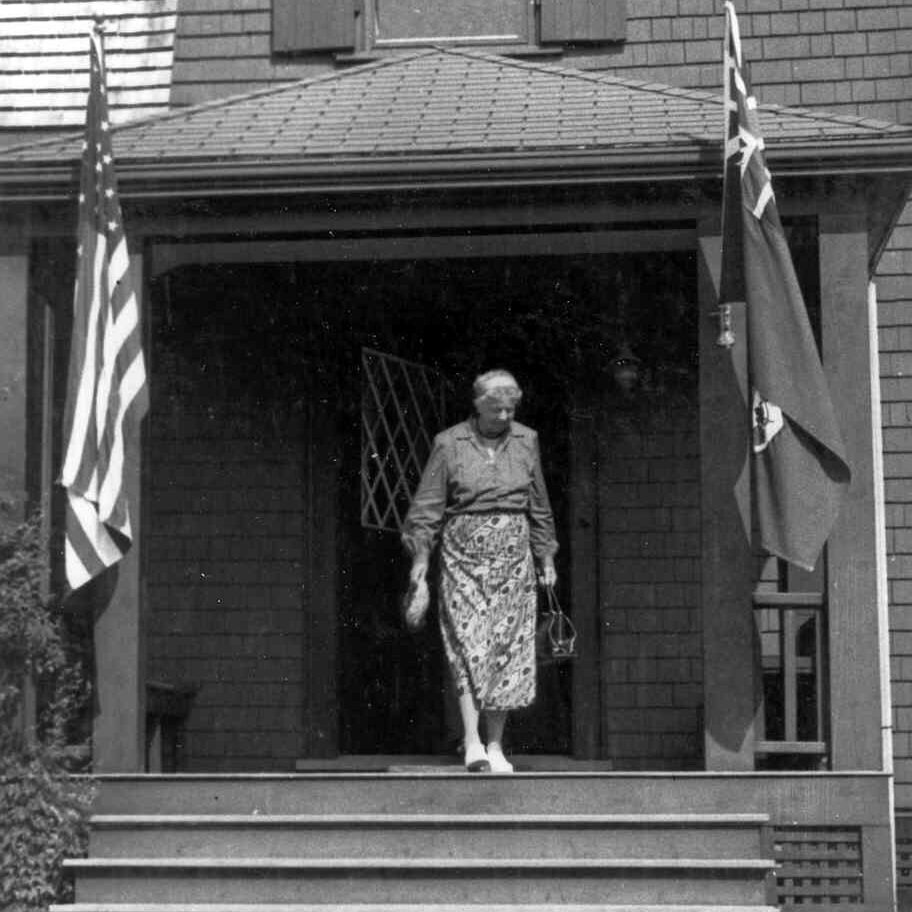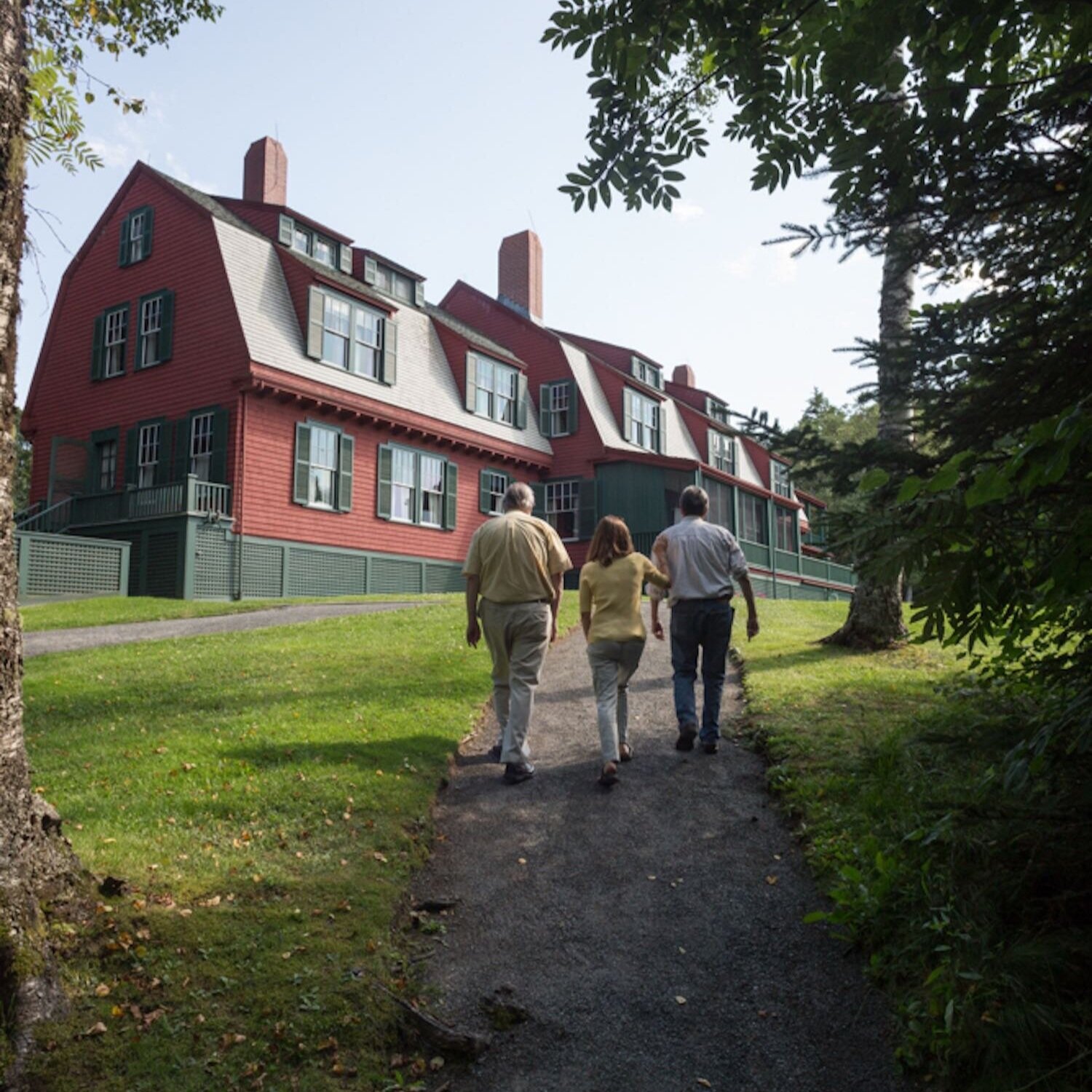Roosevelt Campobello International Park is a singular example of international cooperation - jointly administered, staffed, and funded by the peoples of Canada and the United States. Franklin and Eleanor Roosevelt’s magnificent summer home is preserved here in a combination indoor museum and outdoor nature park on Campobello Island, New Brunswick, Canada.
Creation of the Park
After President Roosevelt’s death in 1945, the Roosevelt Cottage fell into disrepair. In 1951, the family sold their property on Campobello Island to the Hammer Brothers, wealthy New York art gallery owners and business tycoons. The first floor of the cottage was opened as an “F.D.R. Museum”, and admission was charged. By 1957, the Hammer brothers began to lobby senators and congressmen for the creation of an international park, and the transfer of the Campobello Island properties to the Roosevelt Campobello International Park Commission was completed in August of 1964.
The Park was opened on August 20, 1964, with Mrs. Maryon Pearson and Mrs. Lady Bird Johnson in attendance. The Park is jointly owned and managed by both Canada and the United States, created by a treaty that honors the memory of Franklin D. Roosevelt and the legacy of friendship between the two countries.
At left, Eleanor Roosevelt’s last visit to the Roosevelt Cottage, in 1962.
Administration and Funding
Roosevelt Campobello International Park is administered by a commission created under an international treaty signed by Prime Minister Lester B. Pearson and President Lyndon B. Johnson on January 22, 1964. Comprised of six members and six alternate members, the Roosevelt Campobello International Park Commission has equal representation from Canada and the United States. Under the international treaty, the Commission was charged to take the necessary measures to restore the Roosevelt home as closely as possible to its condition when it was occupied by President Roosevelt and to administer the Park as a memorial. The treaty specifies that the two countries share equally in the costs of the development, operation, and maintenance of the Park. Day-to-day management of the Park is the responsibility of a Superintendent, appointed by the Park Commission. Roosevelt Campobello International Park is the only park in the world jointly managed, staffed, and owned by the peoples of two countries and administered by a joint commission in their name.
A Living Memorial
Former U.S. Secretary of State, Senator from Maine, Governor of Maine, and Park Commission member Edmund S. Muskie said it best:
“Campobello - ...air so crisp one can almost shape it, so heady that to breathe it is intoxicating. ...Soft meadows and glowing woods, ... vistas that embrace the solidity of the coast and the exuberance of open water. ... sudden coves, weathered piers, the look of endurance and the evidence of man's enduring.
When Franklin Delano Roosevelt, in whose memory the Park was created, came to Campobello as a child, it was to pursue the orderly summer adventures available to a well-to-do Victorian family.
When he came as a young husband, whose third son was born on the island, it was to taste the excitements of childhood from the perspective of manhood and to pass on to his children the same challenges and rewards he had known.
And finally, when he came as President of the United States, it was to take new strength and composure from Campobello's air and land, from the sea around it, and from the memories of ease his "beloved island" awoke in him.
In the 2,600 acres of the Park at the southeast end of Campobello Island, more that a memory is preserved. The Roosevelt "cottage" is there, the simple wicker furniture and the knick-knacks of a summer home. But beyond the gardens are the bogs and the fog forests, the bays and shoals - all the natural beauties the Roosevelt family knew - protected now for others to enjoy. Although isolated by geography, [Campobello] has entered the lives of two nations as a place to invite any soul and to refresh any weariness with a sense of continuity and endeavour.
The Roosevelt Campobello International Park... translates all the meanings Campobello had for President Roosevelt into a living memorial. Here we remember the man and his work, his vigour and his leisure. The ... Park ...is Canadian soil which has become part of America's heritage and which is being preserved for the future through the commitment of the citizens and governments of both countries.”




